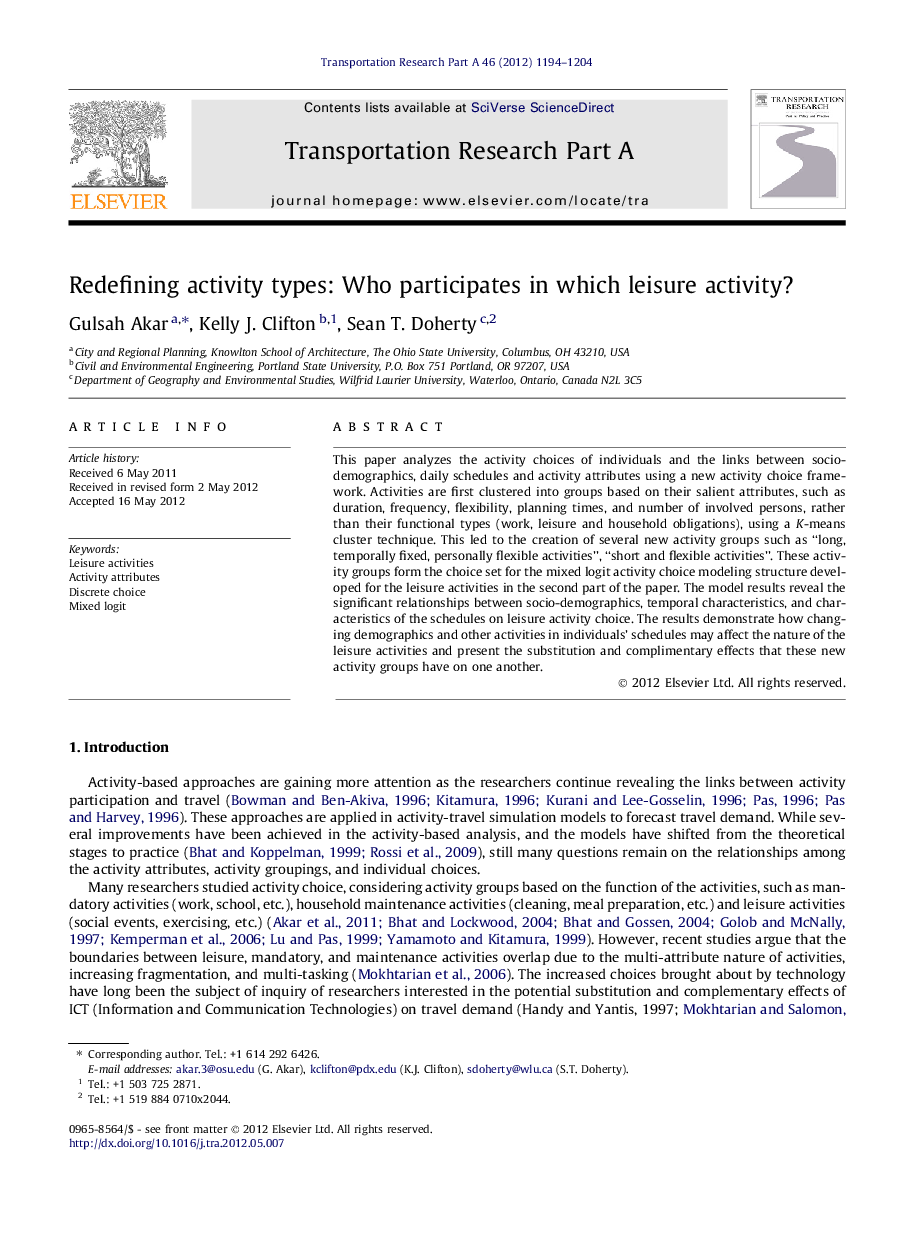| Article ID | Journal | Published Year | Pages | File Type |
|---|---|---|---|---|
| 310824 | Transportation Research Part A: Policy and Practice | 2012 | 11 Pages |
This paper analyzes the activity choices of individuals and the links between socio-demographics, daily schedules and activity attributes using a new activity choice framework. Activities are first clustered into groups based on their salient attributes, such as duration, frequency, flexibility, planning times, and number of involved persons, rather than their functional types (work, leisure and household obligations), using a K-means cluster technique. This led to the creation of several new activity groups such as “long, temporally fixed, personally flexible activities”, “short and flexible activities”. These activity groups form the choice set for the mixed logit activity choice modeling structure developed for the leisure activities in the second part of the paper. The model results reveal the significant relationships between socio-demographics, temporal characteristics, and characteristics of the schedules on leisure activity choice. The results demonstrate how changing demographics and other activities in individuals’ schedules may affect the nature of the leisure activities and present the substitution and complimentary effects that these new activity groups have on one another.
► Activities are clustered into groups based on their important attributes. ► These attributes include duration, travel times, flexibilities and planning times. ► This led to new activity groups for work, leisure and household obligations. ► These new activity groups are used for modeling leisure activity choice.
